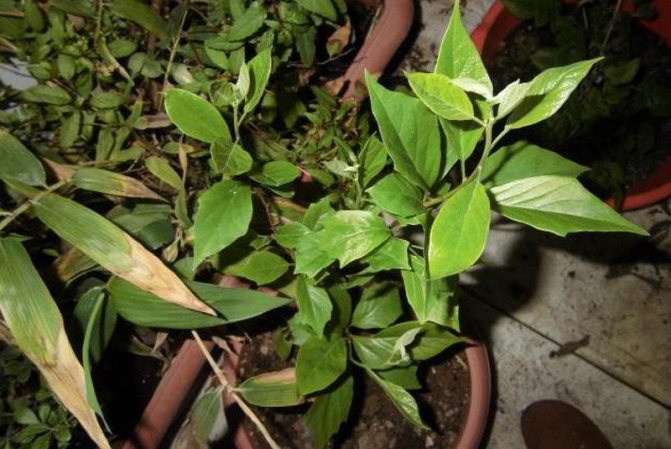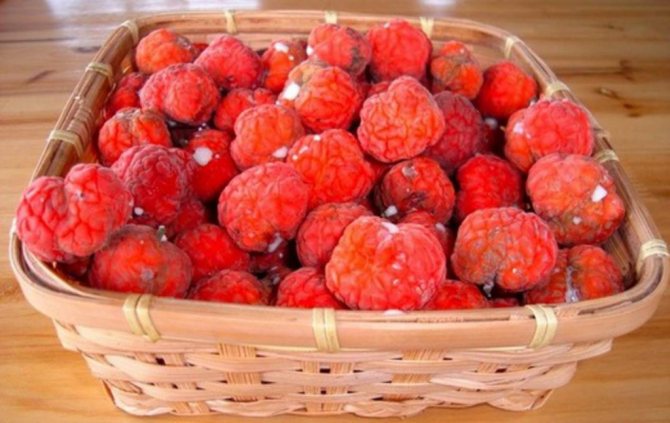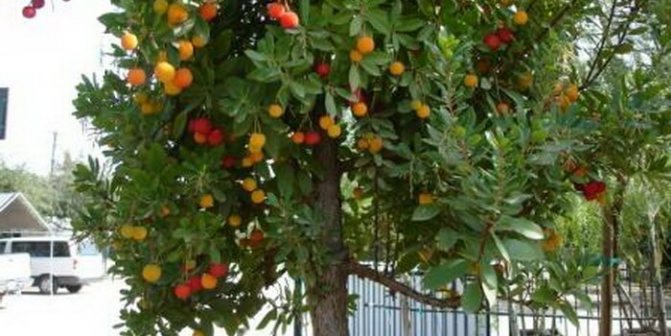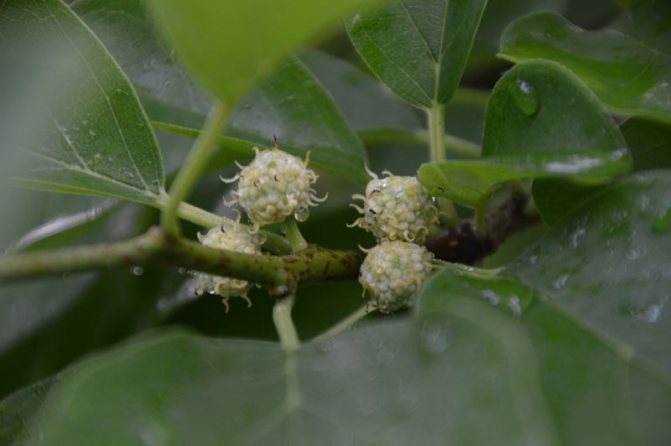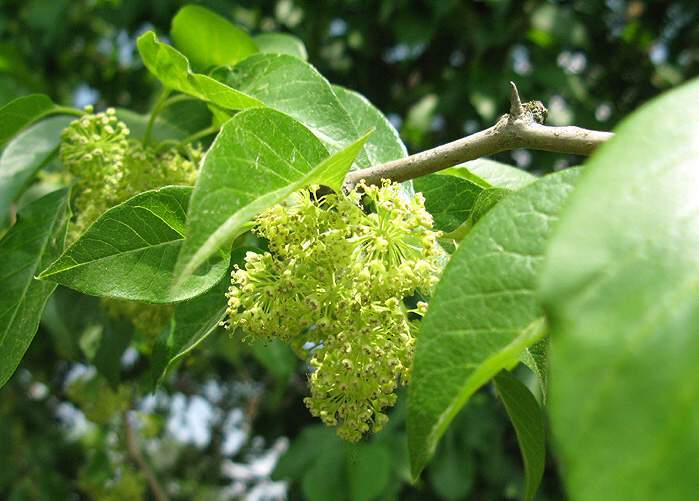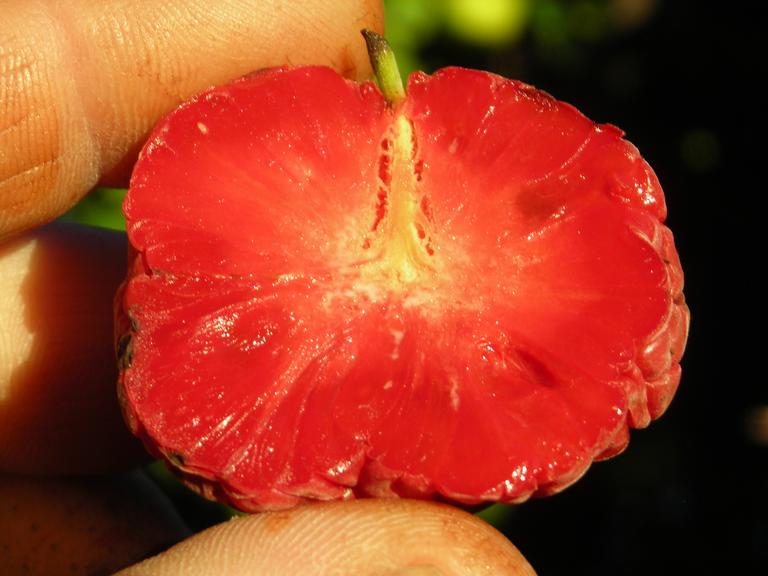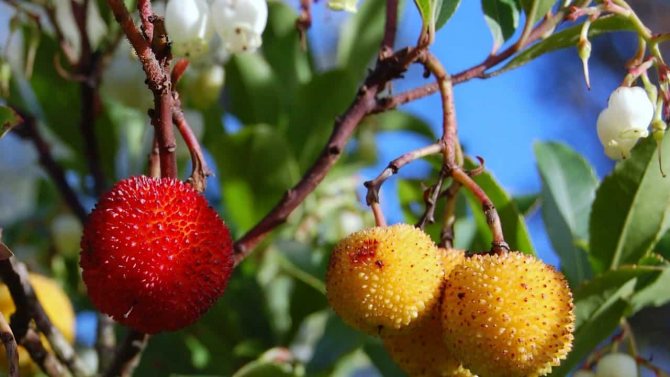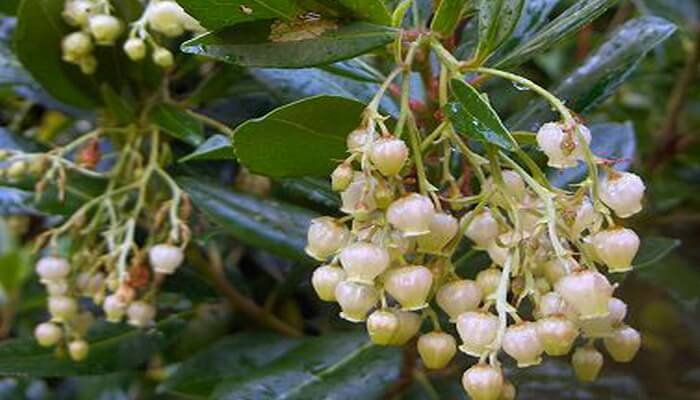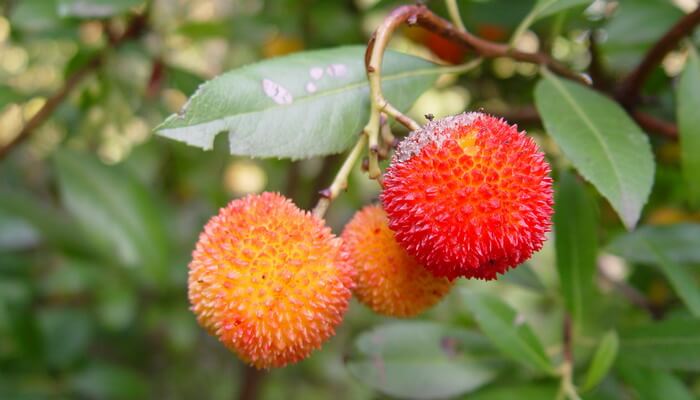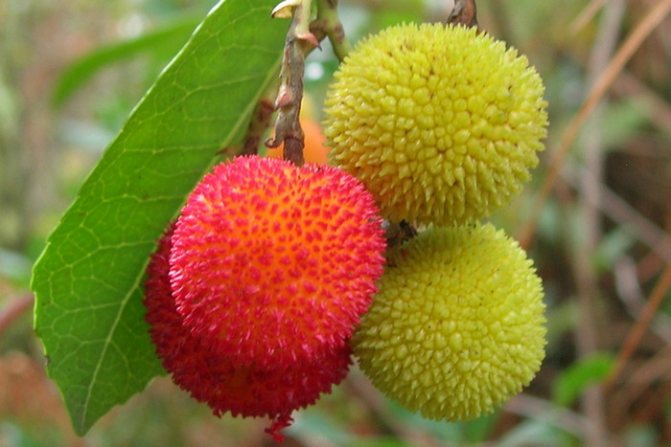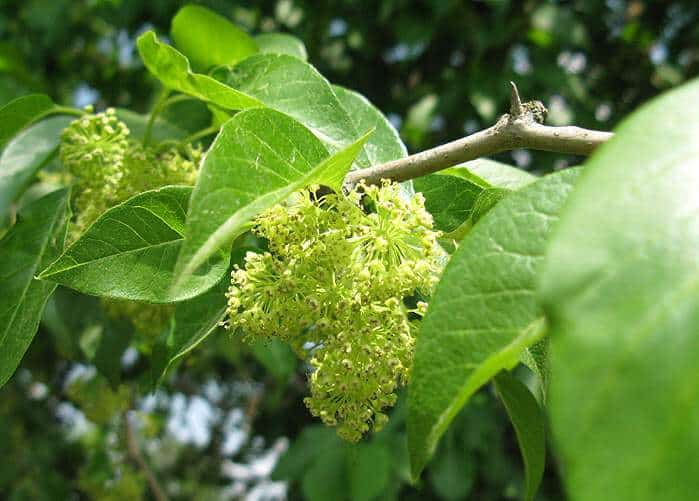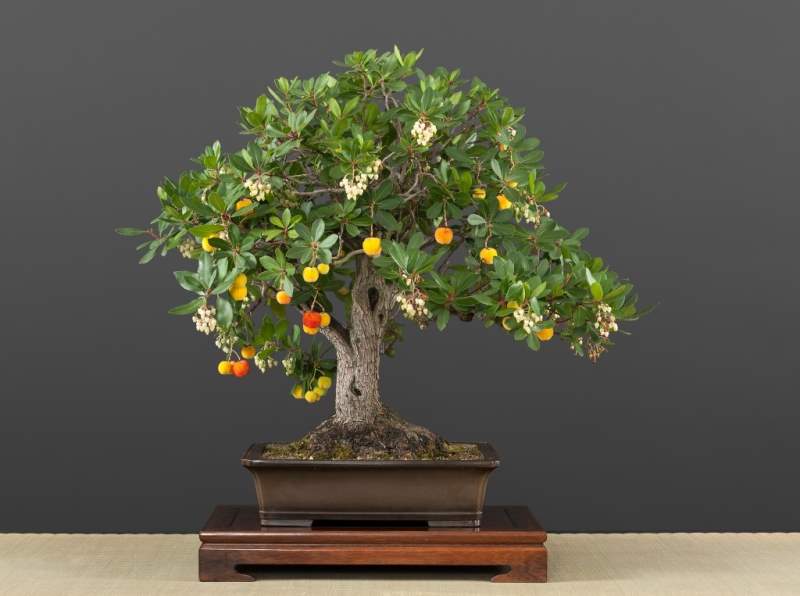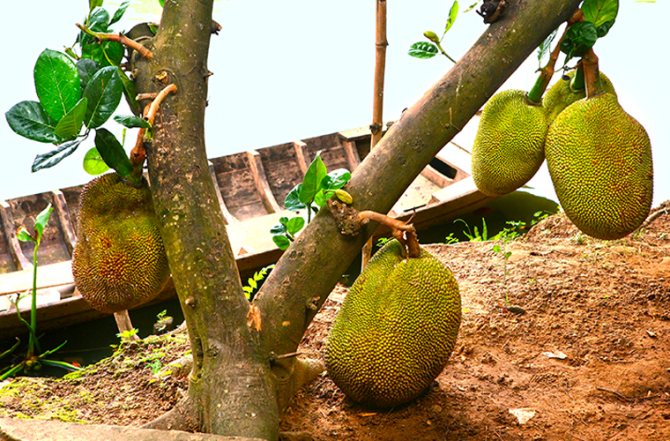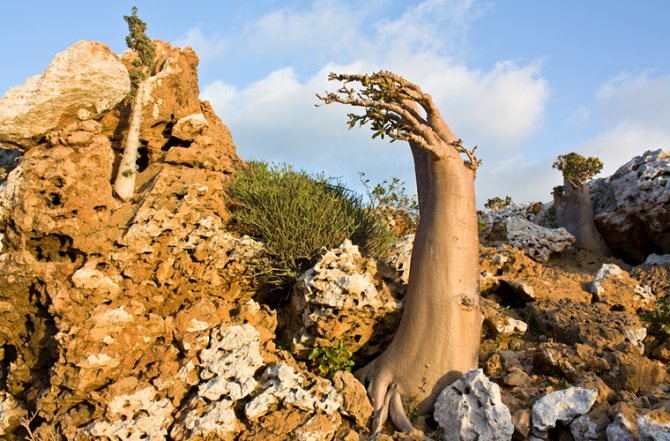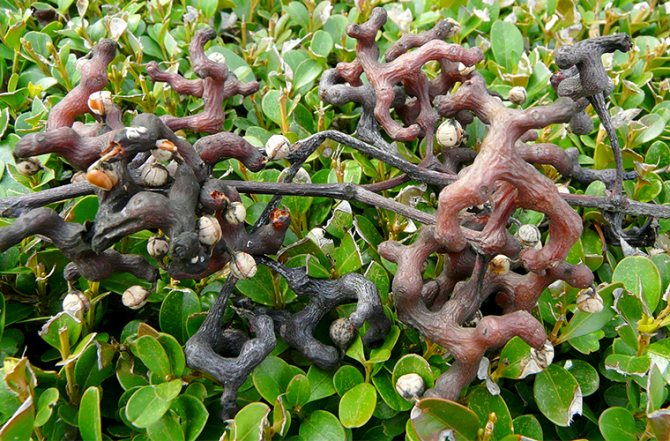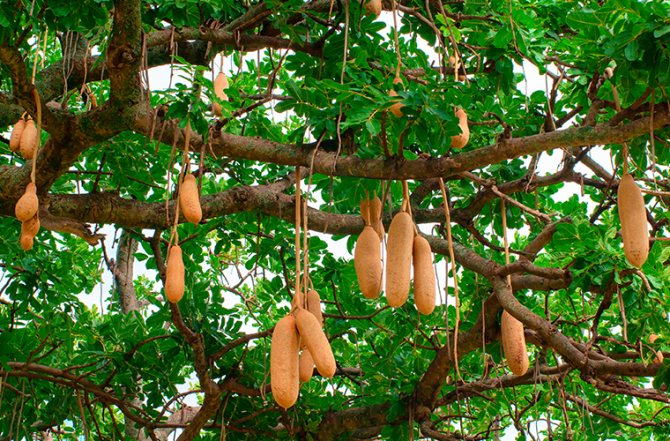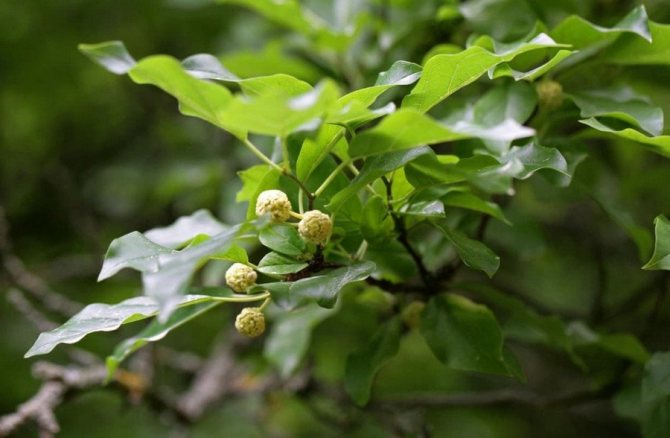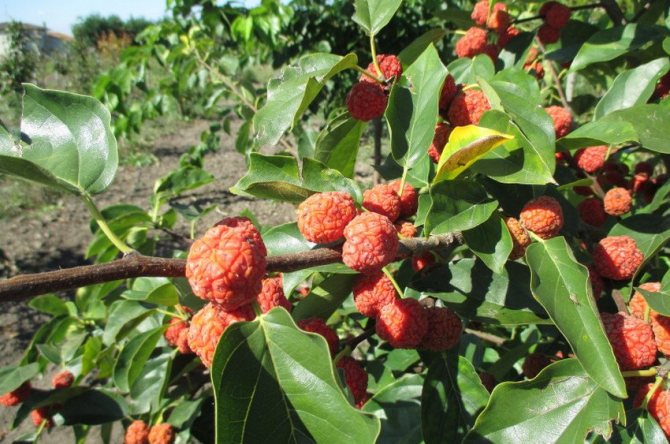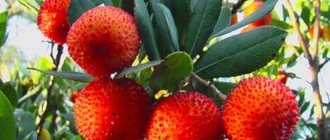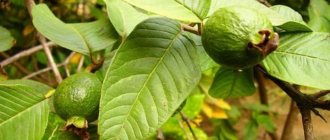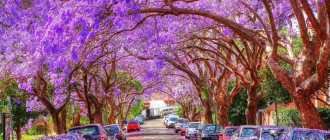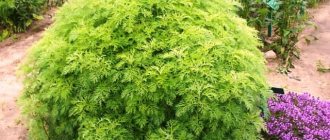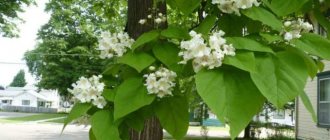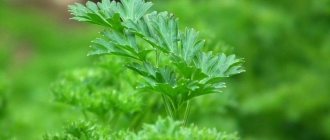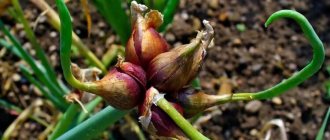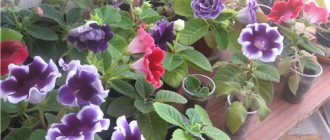Botanical name: Strawberry tree or Kudrania (Cornus capitata). Belongs to the Mulberry family.
Homeland of the strawberry tree: East Asia.
Lighting: light-requiring.
The soil: slightly acidic, nutrient mixture consisting of earth, humus, peat and sand.
Watering: moderate.
Maximum height: 6 m.
Average life expectancy: 50 years.
Landing: seeds, cuttings, root shoots.
Origin and species of kudraniya
It is known that the strawberry tree originally grew in East Asia, Afghanistan, Iran, and also in Central China. By species, kudrania belongs to the Mulberry family by biologists. This is what determined the exactingness of this exotic to the temperature of the soil and the environment, illumination and humidity. How did this plant get to other territories and when did it happen? Kudrania, a photo of which is now not uncommon, was allegedly spread almost all over the world thanks to trade and tourism development. Be that as it may, but even in the last century, only botanists knew about this plant, and today this tree is in the collection of any self-respecting amateur plant breeder.
What does a strawberry tree look like?
The plant, known as kudrania, is a deciduous tree that naturally does not grow more than 6 meters in height. The leaf blades of the plant are simple, whole-edged, with small notches along the edges. Their color is dark green, without pubescence.

Annual shoots of kudraniya are covered with green bark, older ones - brown. Indoor strawberry trees almost always have lighter colors in the trunk than those that grow naturally. The branches of the curls are straight, located at a slight angle to the trunk, which makes it convenient to care for the plant. The crown of the plant is spreading and quite dense, it is easy to form. On the fracture of leaves, young or mature branches of curls, you can see droplets of milky juice that stand out.
Description of the plant
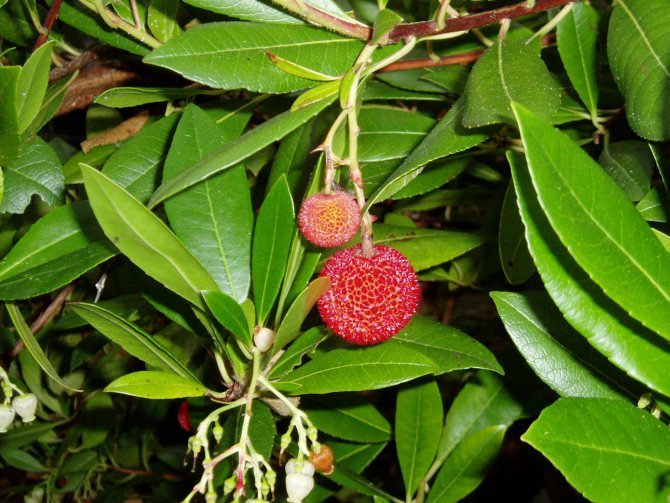

The leaves of the strawberry tree are large, wide, petiolate, with a well-developed system of conductive veins, with small notches along the edges. The flowers are collected in panicles, snow-white or straw-colored, shaped like lanterns. Seeds are ovoid, tiny. The fruit is spherical, with many seeds, the flesh is loose, the taste is reminiscent of strawberries. Ripe berries are orange-red in color, up to 3 cm in size. The tree grows extremely slowly, the height of a fifty-year-old representative is about five meters. Blooms in autumn. Arbutus can bear fruit for over two hundred years.
Strawberries from the tree? Description of the fruits of kudraniya
Despite the fact that the plant is called "strawberry tree", its fruits bear little resemblance to these berries. The spherical red or red-burgundy fruits of the tree actually most of all resemble large-fruited raspberries, since, according to the biological classification, they belong to complex polydrupes. The size of the fruits depends on many factors, they often reach 3-5 cm in diameter.


The taste and smell of the fruit of the strawberry tree, as well as their appearance, bears little resemblance to the actual strawberry itself.The presence of sugars in berries determines their sweetness, but the sourness characteristic of strawberries is completely absent. When compared with other fruits, the fruits of the strawberry tree plant, the photos of which you can see below, taste very similar to persimmon.
It is noteworthy that the fruits, like branches with leaves, contain milky juice (milk). The berries of this exotic are very juicy and soft, therefore they are not suitable for transportation. After collecting them, they are eaten for several hours, since within a day after collecting they lose their marketable and taste qualities. In addition, you can make jam or jam from kudraniya berries, dry them and use them for making drinks.
Strawberry tree (12 photos)
The strawberry tree is an evergreen, slow-growing, small tree or shrub. By the age of 10 they reach a height of 2.5 m, at 45-50 years only 5 m. The life span can reach several hundred years.
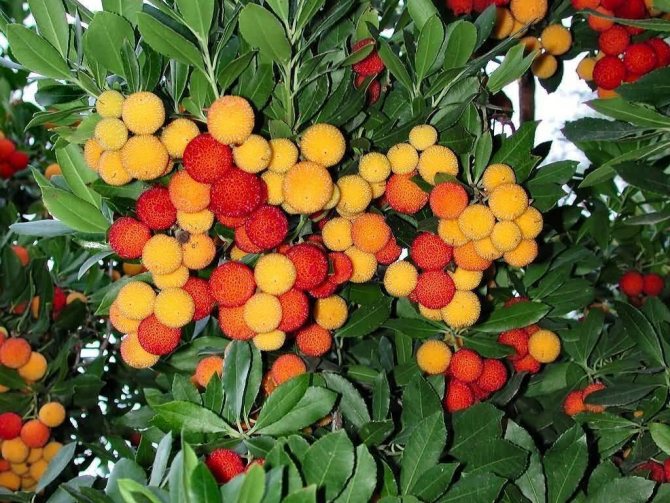

0
See all photos in the gallery
Strawberry tree or strawberry or arbutus is a relict plant. Fossilized strawberry tree trunks have been found in Jordan. The mention of strawberries was found in the writings of the ancient Greek scientist and philosopher Theophastus, who lived in the 300s BC. Even then, people were familiar with the features and properties of this tree.
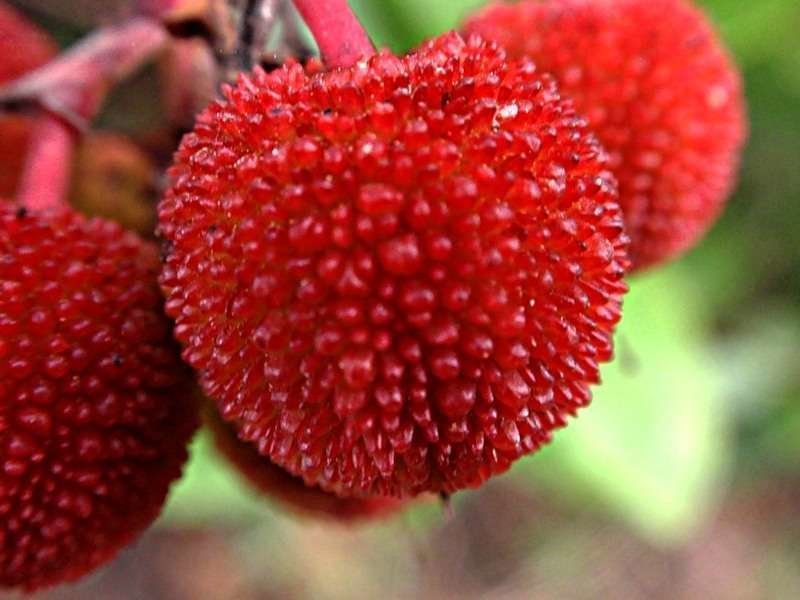

0
In some peoples, arbutus is called the apple of Cain, because its red fruits were associated with drops of blood of Abel, who was killed by his brother, Cain.
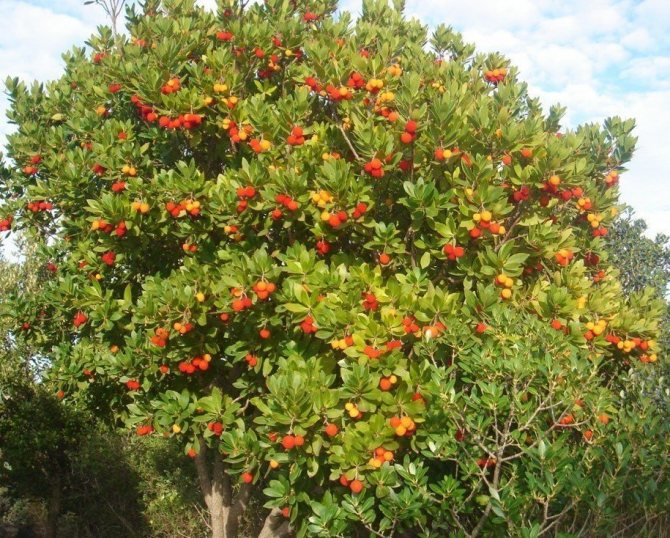

0
Plants of this species are common in the Mediterranean, Europe (in particular in Ireland), North America, but the greatest variety of species is observed in Mexico. In our country, it grows on the Black Sea coast of the Caucasus and on the southern coast of Crimea.
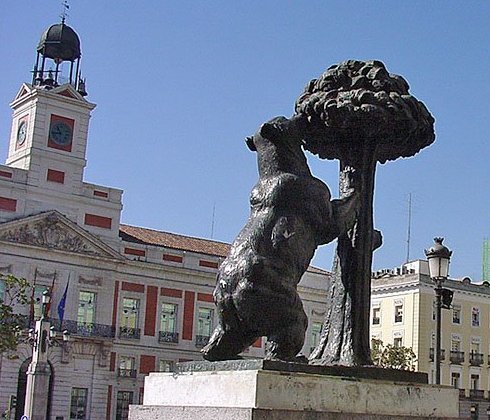

0
The species is very popular in Madrid, as the symbol of this city is a bear eating strawberry fruits.
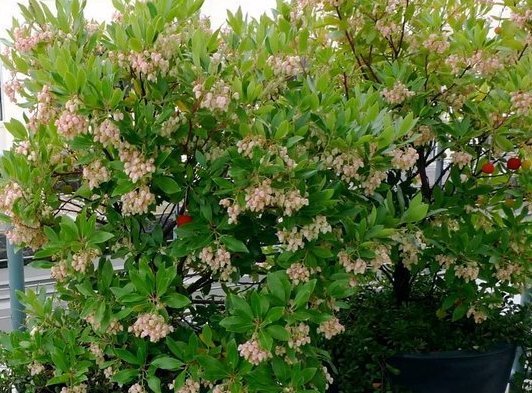

0
There are large-fruited and small-fruited arbutus. Large-fruited is grown as a houseplant. Indoor strawberries taste different from those that grow outdoors. The fruits of the strawberry tree only look like strawberries - its berries have a stone inside, the taste is almost fresh and slightly bitter.
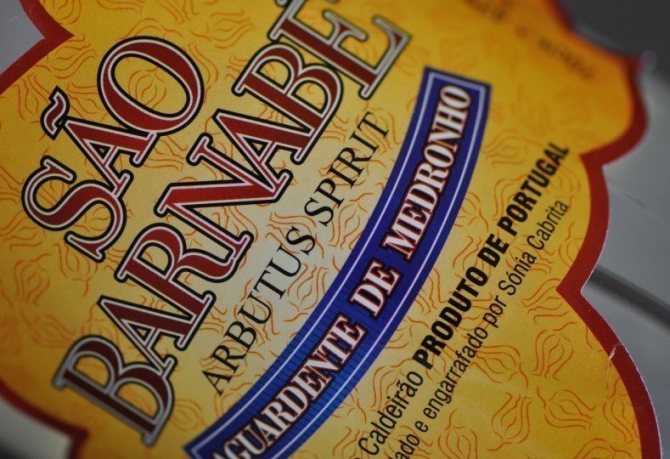

0
They are used to make delicious and nutritious preserves, jams, liqueurs and wines. In Portugal, a fragrant vodka is produced from the fruit of the strawberry tree called "Aguardente de Medroña".


0
Berries eaten in large quantities are intoxicating and cause severe headaches. Store dried and frozen. The shelf life of dried fruits in lying conditions at room temperature is 1-2 years. Strawberry is a good honey plant, but the honey from its flowers turns out to be bitter.


0
The trunk of the tree is orange or reddish. The bark changes annually, while making a characteristic rustling sound, for which the plant was nicknamed "the whisper". Among some peoples, the arbutus, which sheds its bark every year, was called "shameless".
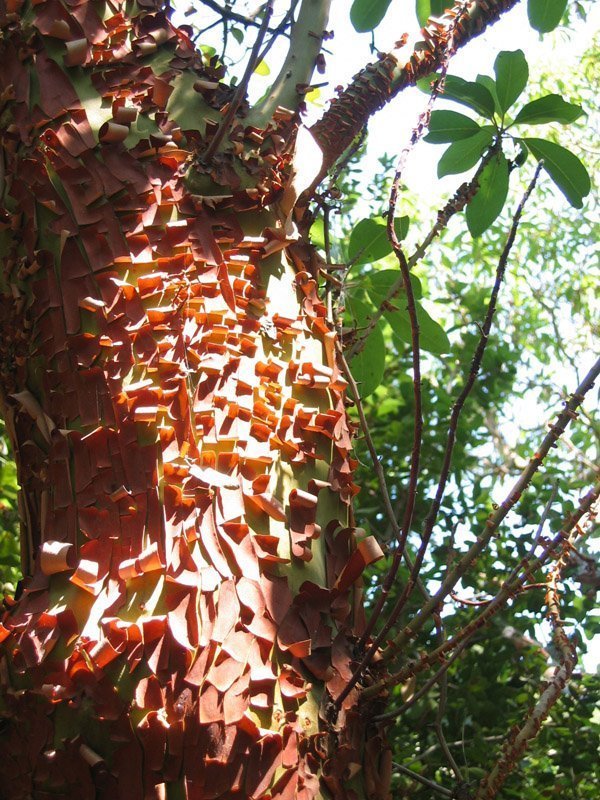

0
This characteristic feature is explained by the fact that trees growing in hot, humid tropical climates are attacked by plants - parasites (epiphytes), which try to settle in cracks in the bark. Therefore, the strawberry tree is freed from the bark and does not allow epiphytes to take root.
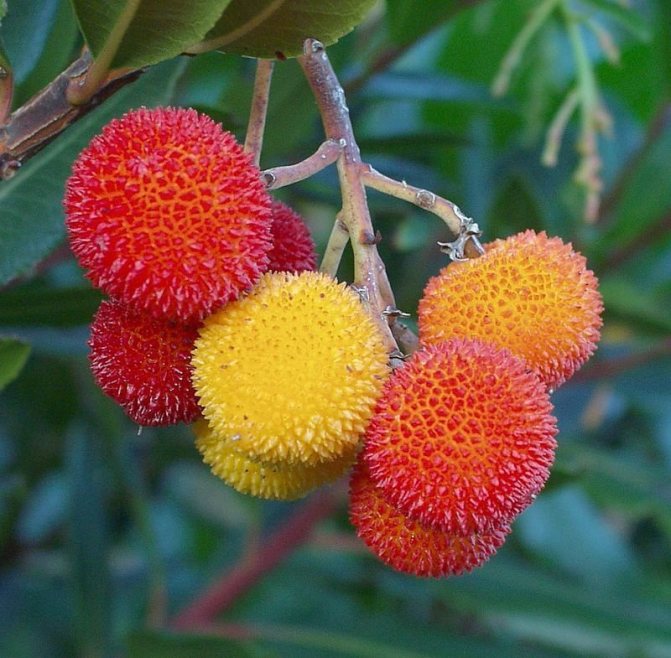

0
All parts of the strawberry tree are used in medicine. In Europe in the XIV century, the extract of leaves and flowers was considered a remedy for poisons and a cure for the plague. Later, herbalists used the strawberry tree as an astringent and antiseptic. Modern medicine has confirmed these properties.
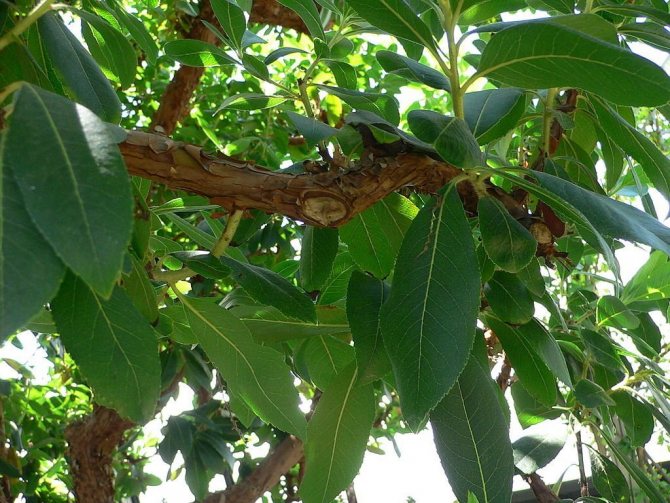

0
The bark and leaves of the strawberry tree are high in tannin. The extract from the bark is used for tanning leather, and also as a dye - it gives a brown tint. During the Middle Ages, strawberry bark was used to dye wool from which tapestries were woven.
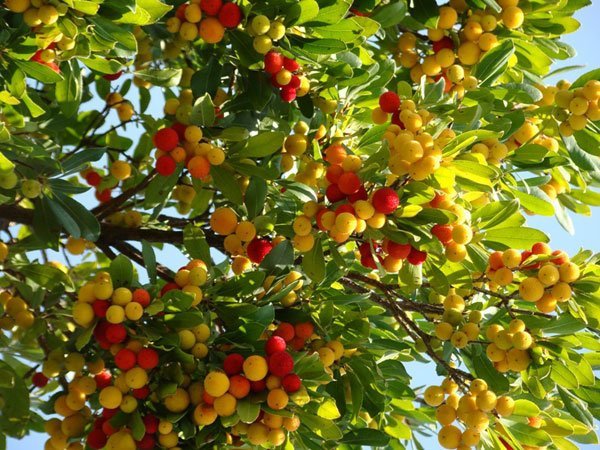

0
The wood of the strawberry tree is strong, hard, heavy, does not decay, has a brownish-white color. Jewelry boxes and watch cases are traditionally made from it.
How to grow curls: outdoors or indoors?
Despite the fact that in Russia there are areas with a relatively favorable climate for such an exotic plant as kudrania, cultivation in open ground is practically not carried out. Most gardeners prefer to keep this plant indoors. This is due to the requirements of this tree to the conditions of detention.
Firstly, the strawberry tree does not tolerate cold snaps, so it is quite problematic to grow it even in the southern regions. Secondly, the number of fruits on each tree is small, therefore, a rare gardener will agree to occupy the usable area of the summer cottage as exotic. Thirdly, a humid climate and the same soils are not suitable for growing curls, and it is easiest to regulate the water content both in the soil substrate and in the atmosphere when growing indoors.
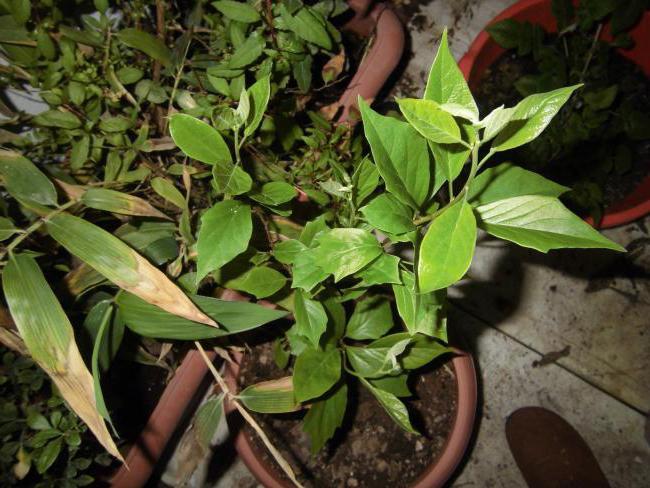

However, despite all the difficulties, the strawberry tree can be found in amateur gardens even in the middle lane. There are also enthusiasts in the Caucasus who provide the most comfortable conditions for this exotic tree.
Decorative application
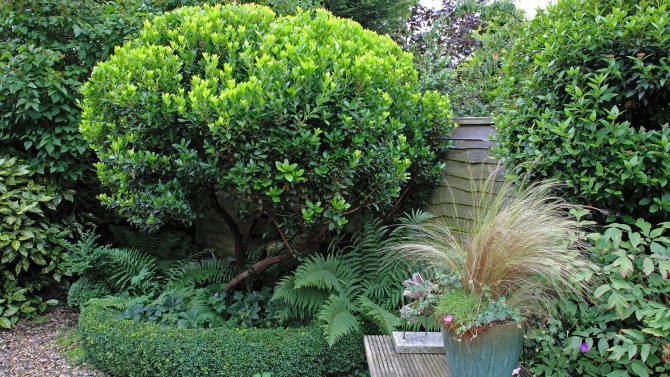

When they talk about trees and shrubs for the garden, plants such as lilacs, forsythia, magnolia spontaneously come to everyone's mind, forgetting about the handsome strawberry. The tree is perfect for growing in gardens, squares, where it will look very picturesque. Luxurious branches, bright flowering, delicious fruits - all this cannot but rejoice and attract the attention of nature lovers. Arbutus will decorate a winter garden or living room for many years, you can admire it at any time of the year. A strawberry tree in a home greenhouse is a jewel and luxury, it must be protected and looked after.
Curl planting material: how to get it?
So where to start growing curls? Of course, from the planting material. You can buy it in specialized stores or from amateurs. If you yourself are the happy owner of curl, you can try to propagate it yourself. This can be done in several ways: cuttings, root shoots or seeds.
It should be noted right away that the best way to get planting material among those who are engaged in growing curls is to separate the root growth. In this case, you can get up to 99% of viable seedlings, which, moreover, enter fruiting earlier.
Cutting a strawberry tree plant, reviews of which in this regard cannot be called positive, is a rather complicated process. To begin with, cut off annual shoots without signs of disease are placed for 16-18 hours in a solution of root formation stimulants. After that, the cuttings are placed in a sandy moistened substrate for 3-4 months. In this case, it is important to constantly monitor the moisture content of the soil, not allowing it to dry out completely.
The chance of getting a healthy young plant in this way does not exceed 30%, so cuttings are not very popular. In addition, after transplanting cuttings with formed roots, there is a high probability of their death, so when planting them in containers, do not forget to use any stimulant.
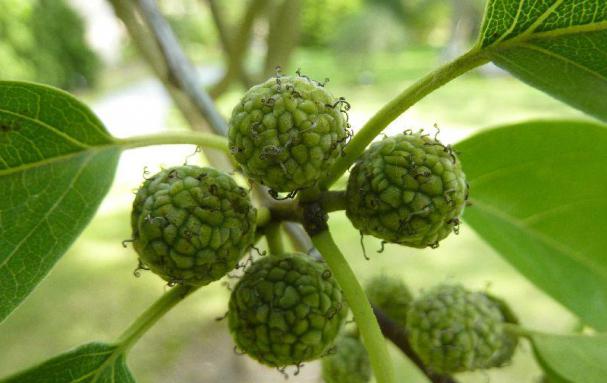

There is no reliable information about the reproduction of curl seeds by seeds, however, it is known that the plants obtained in this way begin to bear fruit only 10-15 years after germination.
Reproduction
As a rule, tree propagation presents a certain difficulty and is available only to experienced growers. Propagating a tree by cuttings is extremely difficult, it is possible very rarely. I am sorry to grow a tree from seeds, but it is also a very long process, it is much easier to buy a young tree in the store.
You can grow a tree from seeds as follows: firstly, the seeds should be removed from the bright red ripe fruit and dried. You cannot immediately soak them: they must lie on the shelf for at least a year. After that, the fruits must be stratified in a sandy mixture at a temperature of 21 to 24 degrees.
Next, they must be sown, watered and covered with glass. We are waiting for seedlings at least two months! But if they do appear, it will be a great joy. We wish you good luck in the field of floriculture, may your strawberry tree delight you for many years.
Preparing the soil for planting
The main condition for making up a potting soil mixture for a strawberry tree is its breathability. The reaction of the soil should be slightly acidic or neutral. These characteristics are possessed by a mixture of sod land (2 parts), humus (1 part), peat (1 part) and sand (1 part). In addition to excellent breathability and nutritional value, this soil also has a good moisture permeability. This mixture is suitable for growing curls indoors. For growing outdoors, it is recommended to make up the same mixture, which must then be poured into a large planting hole (at least 1 meter deep) with a drainage layer of at least 20-30 cm.
Curl care in the first year after planting
In the first year after planting, the strawberry tree does not need additional fertilizing (provided that a nutritious soil mixture has been compiled). Otherwise, fertilizing with a solution of universal fertilizers may be required. In addition, it is important to start forming the crown of the tree and not forget to monitor its condition. Despite the relatively high resistance to diseases and pests, it is worth paying attention to the condition of the stems and leaves of the plant. When traces of pest activity appear, it is important to start treating the tree with suitable means.
Application in traditional medicine
Traditional healers use all parts of the strawberry tree. Raw materials are collected in summer, dried under a canopy or on pallets of dryers, turning over every day. Dried arbutus gifts are stored in paper bags for no more than 2 years. Homeopaths use raw materials for inflammation of the bladder and urethra, skin diseases accompanied by itching and the appearance of blisters, abscesses, scales, problems of the digestive tract.
Decoctions and tinctures are used for diseases of the ears, throat and nose, lesions of the oral mucosa.
The plant extract is used as a remedy that reduces the tone and motor activity of smooth muscles, relieves inflammation and increases the rate of urine formation.
Pharmacological properties
The chemical composition of arbutus is poorly understood. It is known that the fruits of the plant contain organic acids, polysaccharides, sugars. Overripe fruits contain 0.5% alcohol. The bark and leaves contain polyphenols, tannins, and the toxic glycoside Rhodotoxin.
Medical use
For a long time, the extract from the plant has been used as a cure for acutely infectious epidemic diseases. Arbutus has properties to prevent decomposition processes on the surface of open wounds, to increase the rate of urine formation. The infusion of culture leaves relieves involuntary contractions of the stomach muscles, restores the physiological functions of the intestines. A decoction is applied externally, applying bandages to damaged skin areas, burns.
Contraindications
Treatment with drugs based on arbutus is contraindicated for pregnant and lactating women, children. An overabundance of plant berries can provoke migraines, indigestion.
Plant formation in the open field and in the room
When grown outdoors, curls practically do not need pruning.Sometimes it is enough to pinch the shoots growing too quickly and cut the branches growing inside the crown or thickening it “into a ring”. Typically, the strawberry tree is grown on a low stem. Pruning is best done in spring, but it is worth taking time to pinch the shoots throughout the growing season.
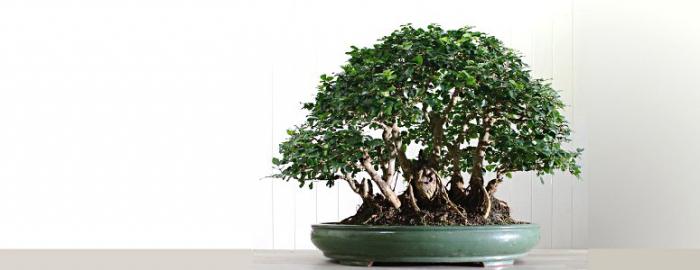

All the recommendations outlined above are also quite applicable for those plants that are grown in a room (often in the form of bonsai). At the same time, there are significant differences: it is recommended to leave no more than 5 skeletal branches in the crown, the length of which must be constantly monitored by pinching and pruning. All branches that interfere with the normal development of the crown (growing inside it, for example) should be removed at their very base.
Useful properties and composition


Curly fruits are rich in sugars and low in acid. They can be eaten fresh and are very juicy and sweet. Compotes, jellies are cooked from berries, they make jams, jams, fruit drinks. They are added in the preparation of various dishes - salads from fruits and berries, confectionery.
The pulp of berries contains a lot of iron, choline, vitamins A, B and PP, glycosides, ascorbic acid, rutin, pectin, resinous substances.
The fruits are great for anemia, insomnia, stress. They are useful for people with diseases of the stomach and intestines, suffering from dysentery and heartburn. In addition, the use of berries lowers blood pressure, purifies the blood, normalizes the liver and spleen, and also restores metabolism. A decoction is made from the bark of a tree, which is an excellent antiseptic, it heals wounds, heals burns and ulcers. Wood is used for the manufacture of furniture, musical instruments.
The easiest way to preserve the berry is to freeze it in the freezer or preserve it with sugar by heat treatment. Also, the berry can be dried and then added to tea.
Interesting video - Strawberry tree:
Few people know about the existence of this exotic fruit tree, but true gardeners strive to get it on their site. The strawberry tree (kudrania) is native to East Asia and China, so the tropical and subtropical climate is more familiar to it.
In the open field, curls can be grown only in the southern regions of Russia, in the Caucasus and in the Crimea. In regions with frosty winters, the tree is planted in large flowerpots, which are transferred indoors for the winter. In this article, I will show you how to plant and grow a strawberry tree in your garden.
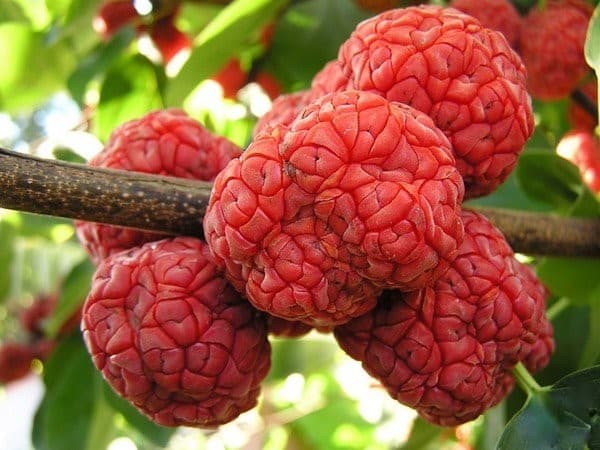

Adult plant care
For indoor cultivation, curls should be placed in the brightest room near the window, since the plant loves sunlight very much. In winter, the strawberry tree is placed in cooler rooms than in summer, as it needs rest (recall that kudrania is a deciduous plant). In warmer months, a pot or container with a plant can be transferred to a balcony or open veranda, as well as taken out into the garden. Before that, it is recommended to gradually accustom the tree to direct sunlight.
Special attention should be paid to the plant during hot periods. Do not water it again, because kudrania tolerates drought well. The best option would be to spray the plant with slightly warmed water.
It is somewhat easier to care for a strawberry tree growing in the open field: pruning in the spring, feeding with green fertilizers and humus during the growing season strengthen the plant's root system, which makes it more resistant to adverse environmental factors. Unlike indoor curls, a garden plant needs special care during the cold season. It is important, after the leaves have been completely dropped, to insulate the tree trunk circle with leaf litter, humus and other materials. In addition, it is important not to forget about the insulation of the trunk and large branches with non-woven material.
Seed stratification and preparation
It is not difficult to grow a strawberry tree at home. To do this, before sowing, the planting material is stratified for about two months in a special mixture consisting of:
- peat - 70%;
- sand - 30%.
Read also: Asian (Indian water) buffalo: description, photo, where it lives, what it eats
Then, dry seeds are placed in a container with warm water and left for a week.
For stratification, the planting material is placed in the prepared mixture to a depth of 10-15 cm and watered well. The container is covered with a bag and placed in the refrigerator for 3 months (but not in the freezer). If there is a glazed balcony or loggia, you can take out a container with seedlings there too.
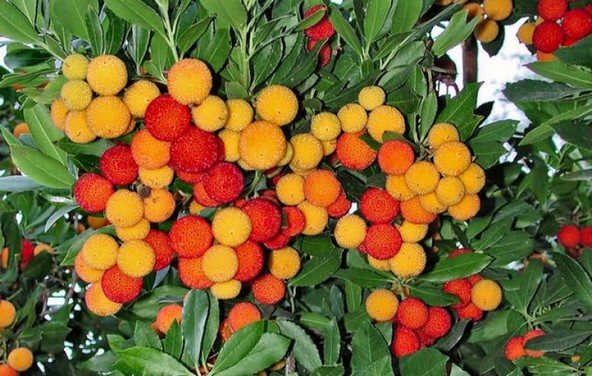

Sometimes the seeds can begin to germinate already in the refrigerator. In this case, the container is placed on a window on the north side (so that there is no direct sunlight and so that it is warm, but not hot).
If the seeds have not sprouted after 3 months, they are taken out of the refrigerator and placed on the same north window, but the bags are not removed.
Pests and diseases of curl and methods of dealing with them
No matter how sissy the tree we are considering may seem, few plants can compare with it in terms of resistance to pests and diseases. This exotic beauty is not affected even by such "eminent" pests as spider mites and aphids. However, if agricultural technology is not followed, the strawberry tree can be attacked by thrips and mealybugs. Normalization of humidity and temperature in the room helps to cope with them, as well as special preparations that can be purchased at any store for gardeners and florists.


Growing from seeds
The method is complex and time consuming, since curdranium grown from seeds begins to bear fruit only 10 years after planting. However, if there is no goal to get a huge harvest, but you want to decorate the plot or loggia, feel free to grow a strawberry tree, because in the first year the growth of the seedling will reach 1 meter.
When to sow
It is recommended to sow curl seeds in the same period when they were removed from the fruits, that is, at the end of August. It is easy to extract them - just pick a ripe berry, crush and rinse the seeds in a sieve or on a cloth. The resulting brown grains can be planted immediately into the prepared substrate.
You will be interested in learning how to grow strawberries from seeds.
Sowing process
The seeding scheme is as follows:
- a mixture of peat, sand, perlite and humus is poured into a small pot;
- planted seeds directly in the pot are covered with a film so that it does not touch the ground;
- put the pot in the refrigerator - where vegetables and fruits are stored (bottom cell);
- after two months, the pot is transferred to the heat - the temperature in the room should not fall below + 21 ° C;
- the soil is constantly moistened.


The sprouts should appear in 1–2 months. The described plant will bear fruit after rooting in a pot and a set of leaf and root mass - only 10 years after planting.
Seedling care
Special care for curl seedlings is not required.
It is important to provide three conditions:
- constant heat - the temperature is not lower than + 21 ° С;
- soil moisture (however, it is important not to be confused with wet soil and dampness);
- spaciousness and enough sun.
Transplanting
The curls, ready for planting in the ground, can be planted after the seedlings get stronger, a trunk 20 cm long appears.
Important! Kudrania loves loose soil, so it is recommended to loosen as often as possible so that air flows to the roots.
The disembarkation process is as follows:
- prepare a hole for planting a tree (dig a hole 1 meter deep, at the bottom of which drainage is poured, at least 30 cm);
- nutrient soil is poured into the pit (peat, humus, sand and turf soil are taken in equal parts);
- the soil should be well loosened, then place the seedling, straightening the roots before planting, pour another layer of soil on top and gently crush the earth.
